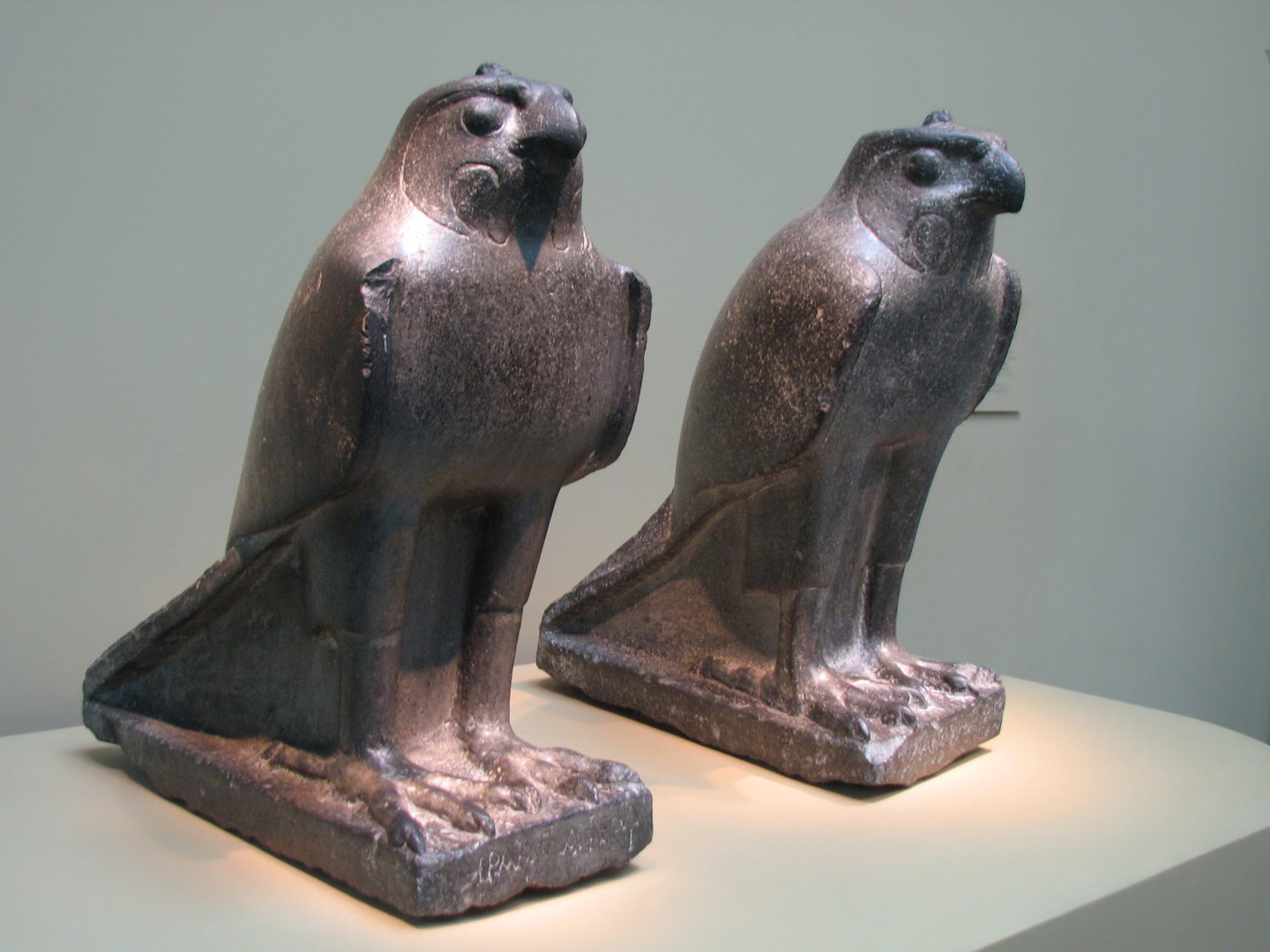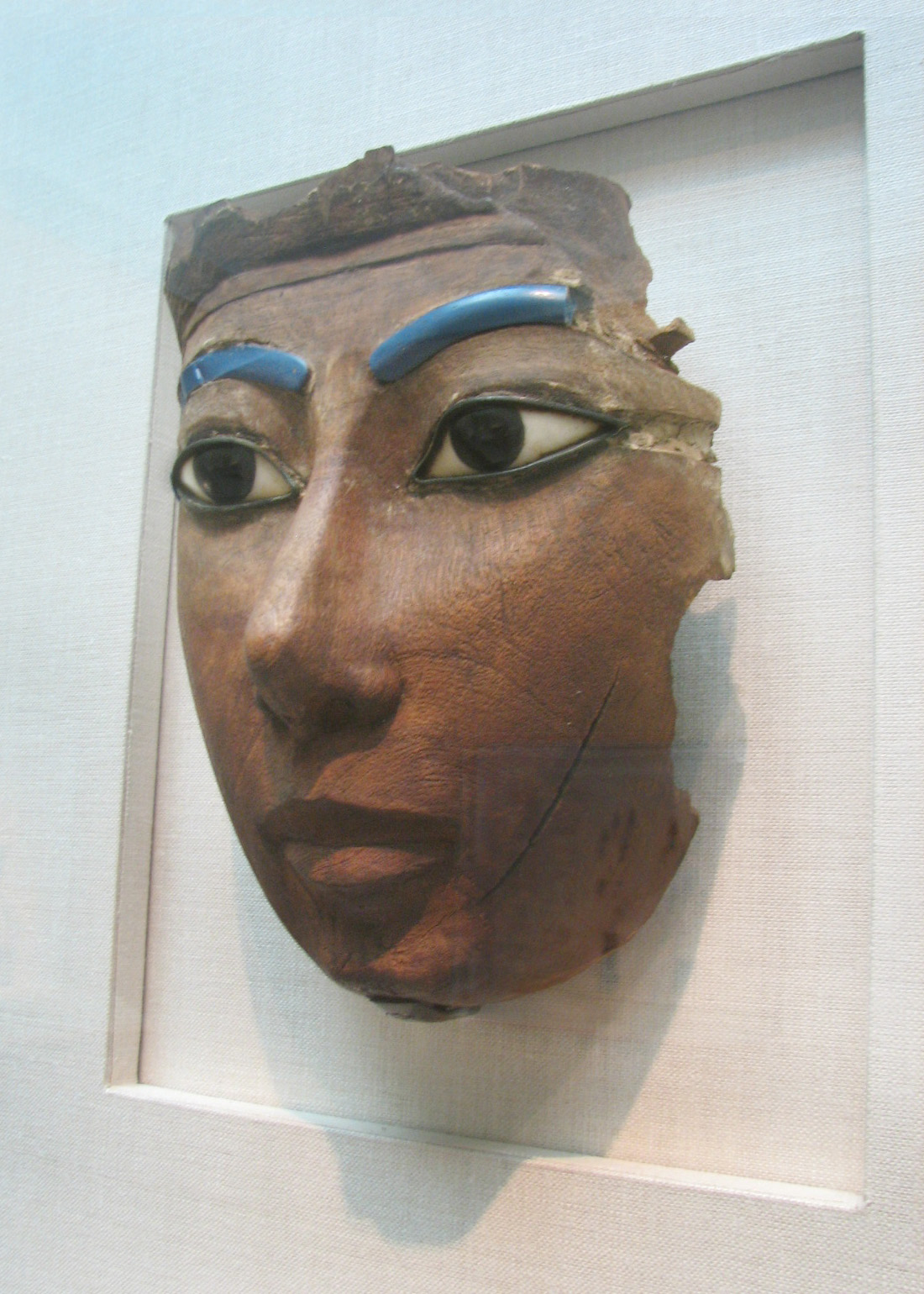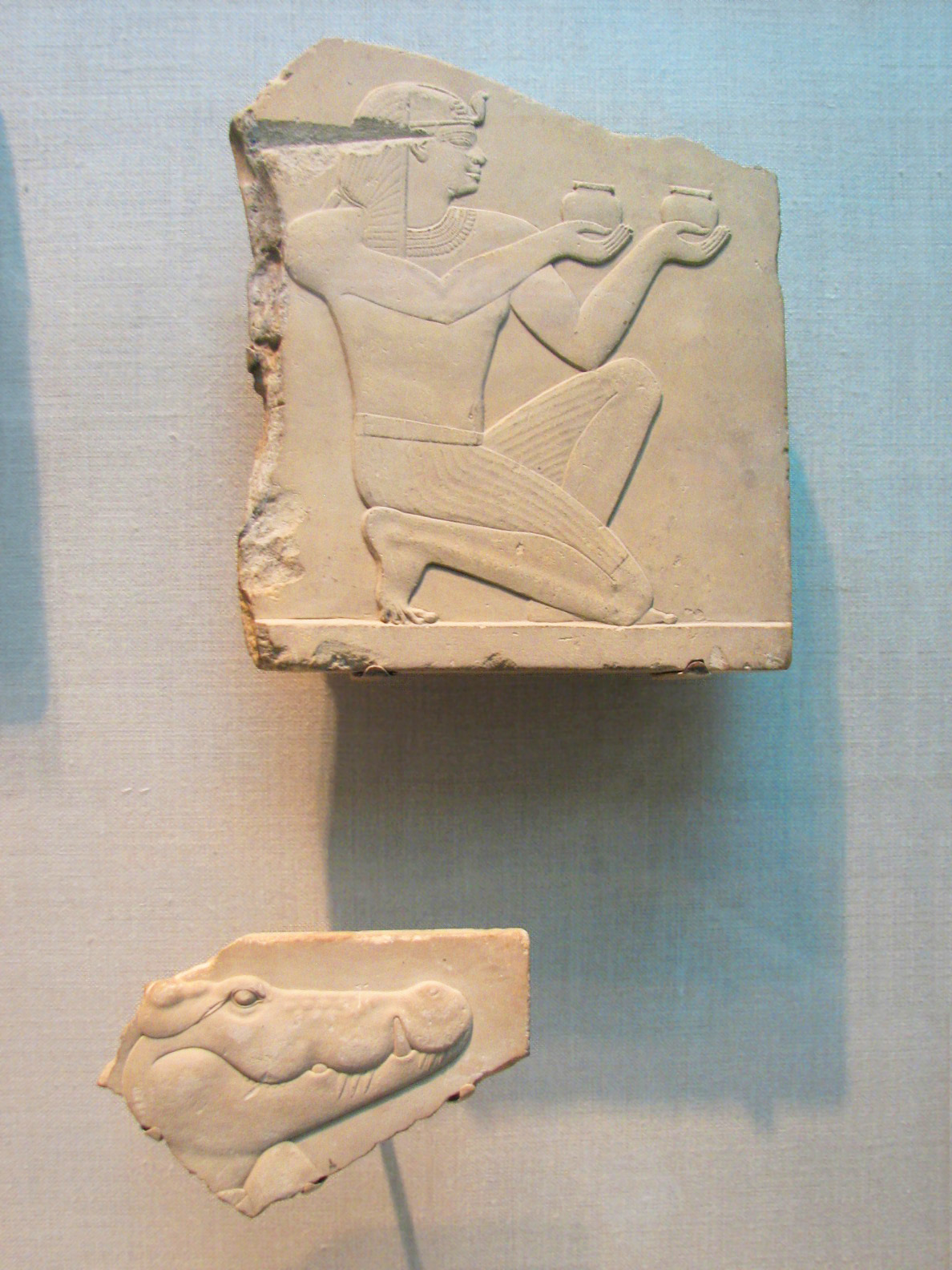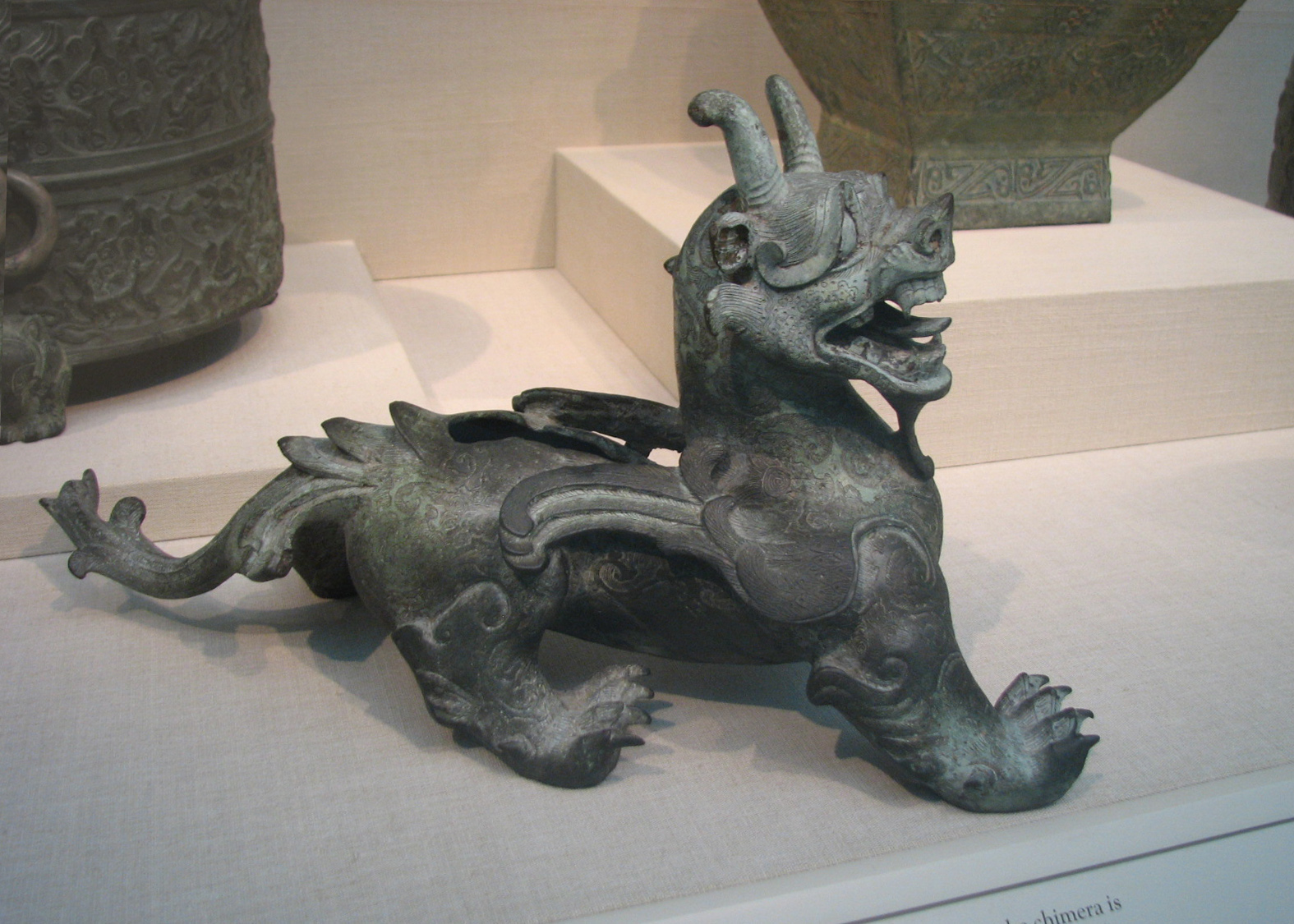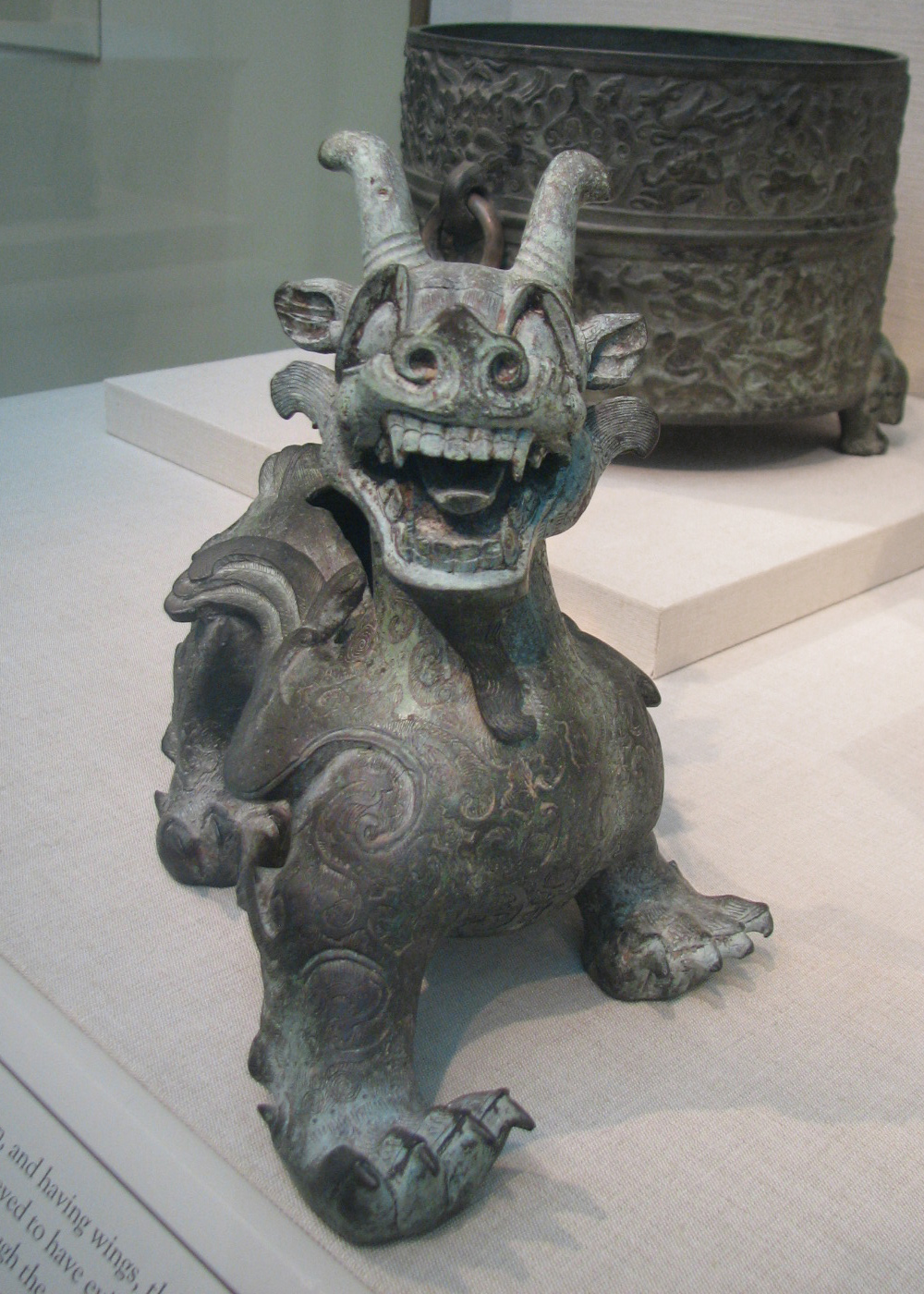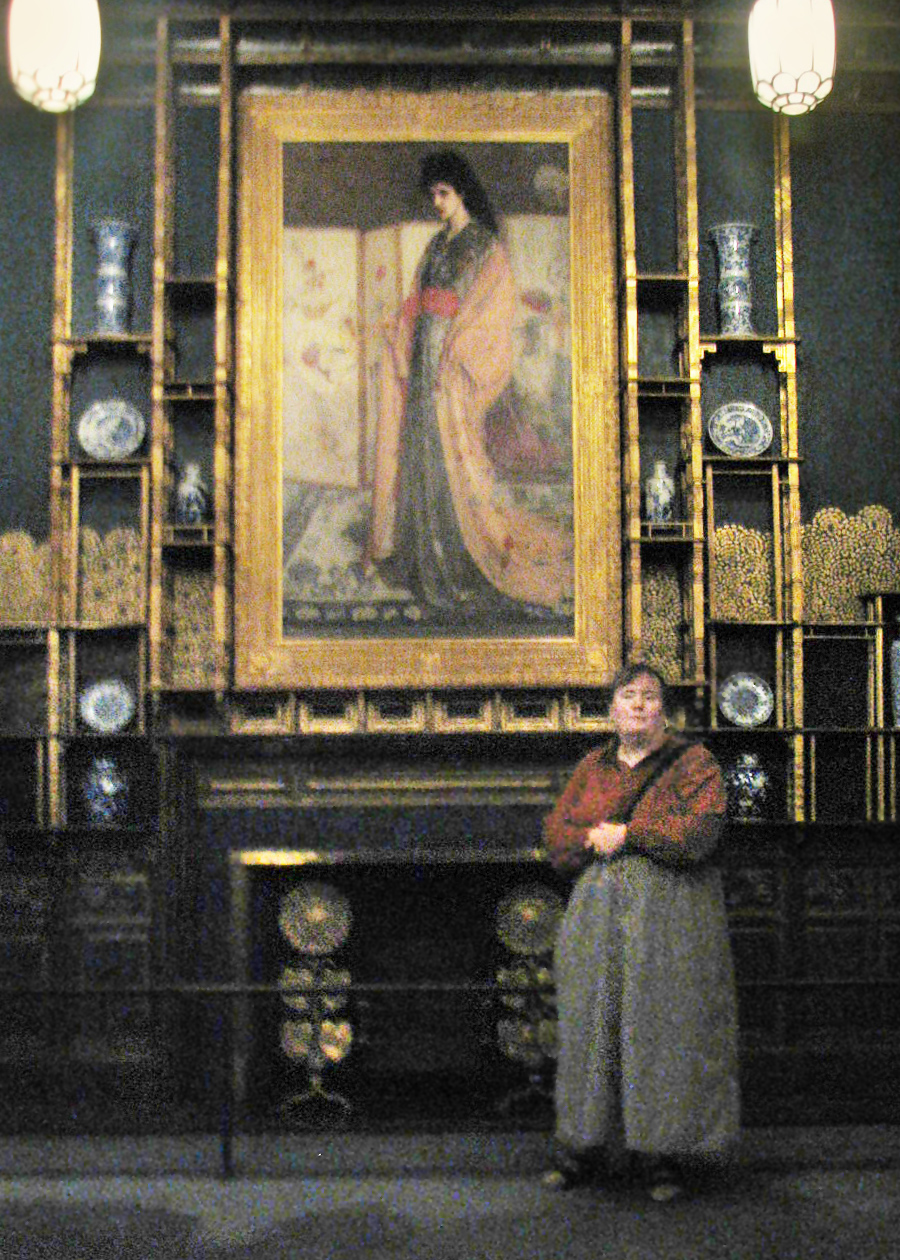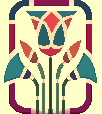
Thursday, June 7, 2007 C
"First Day of Exploration - Freer Gallery"
8:45pm
From there, we circled around to the Washington monument:
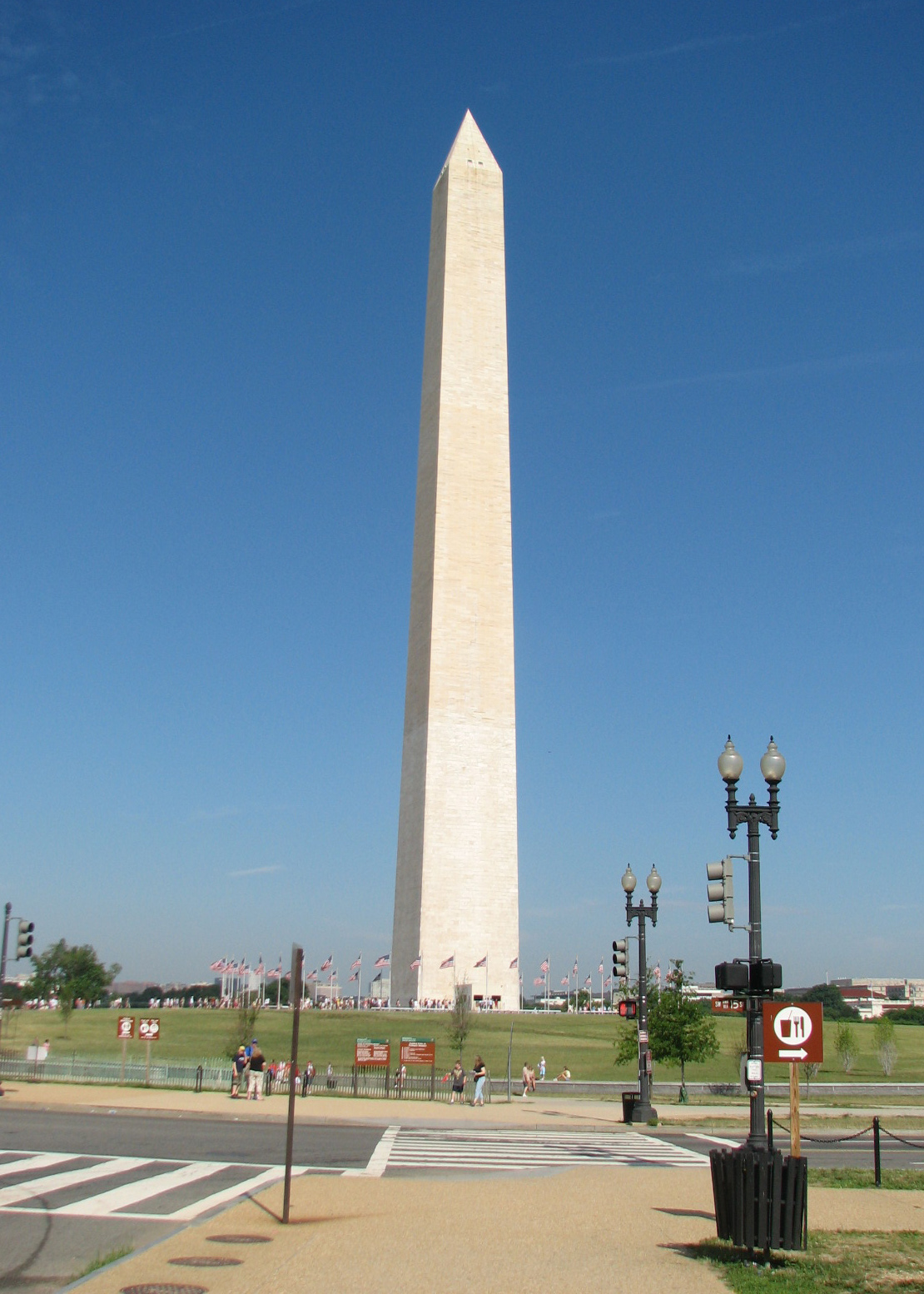
After much rest in the relatively cool shade of the tent, I recovered enough to examine the little maps I'd brought with me. A little walk up 14th St to Jefferson St, and we would be at the Freer Museum of Asian and some Egyptian art. So we did that.
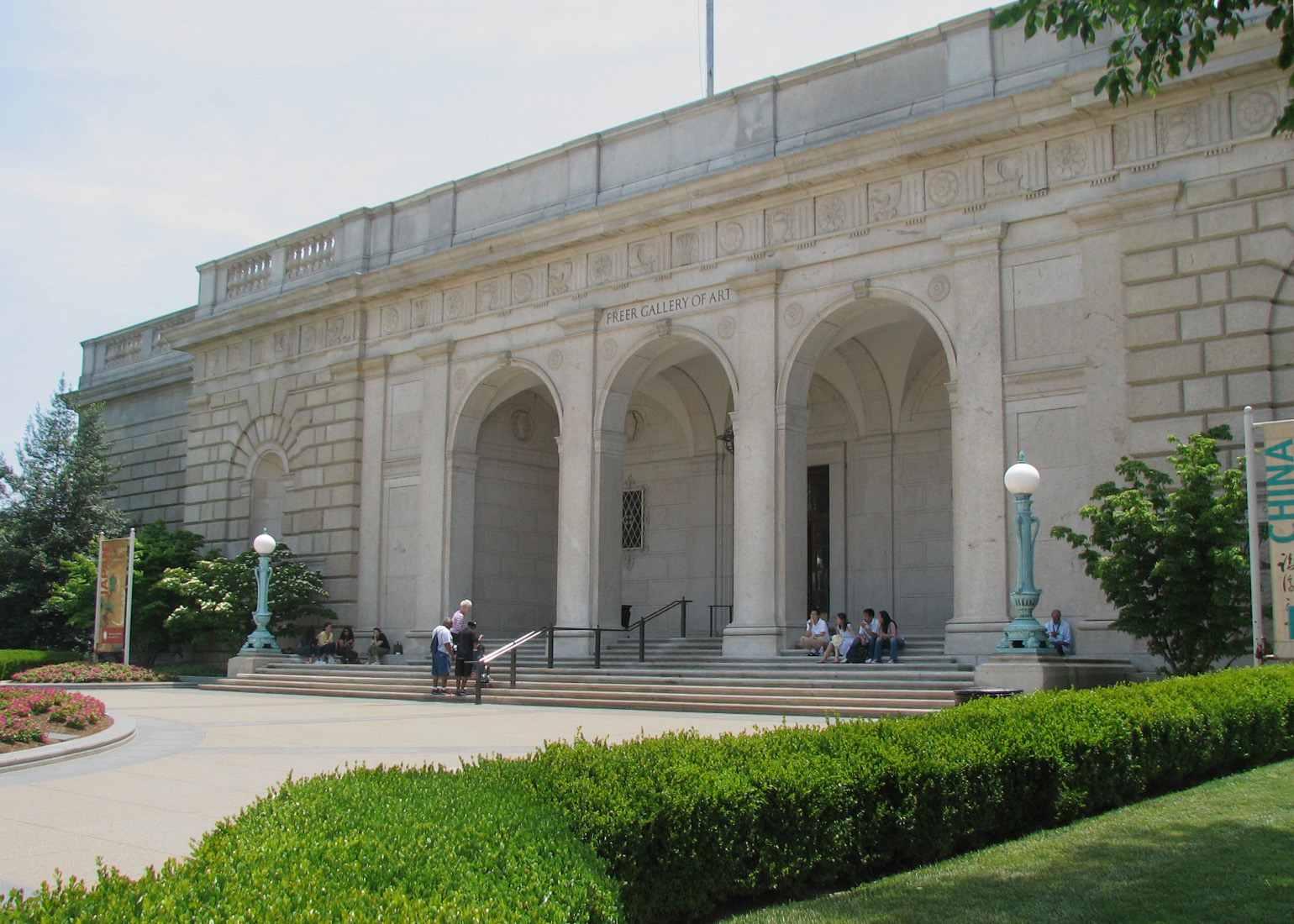
Its main emphasis are items from Japan and China, as the banners inform us...
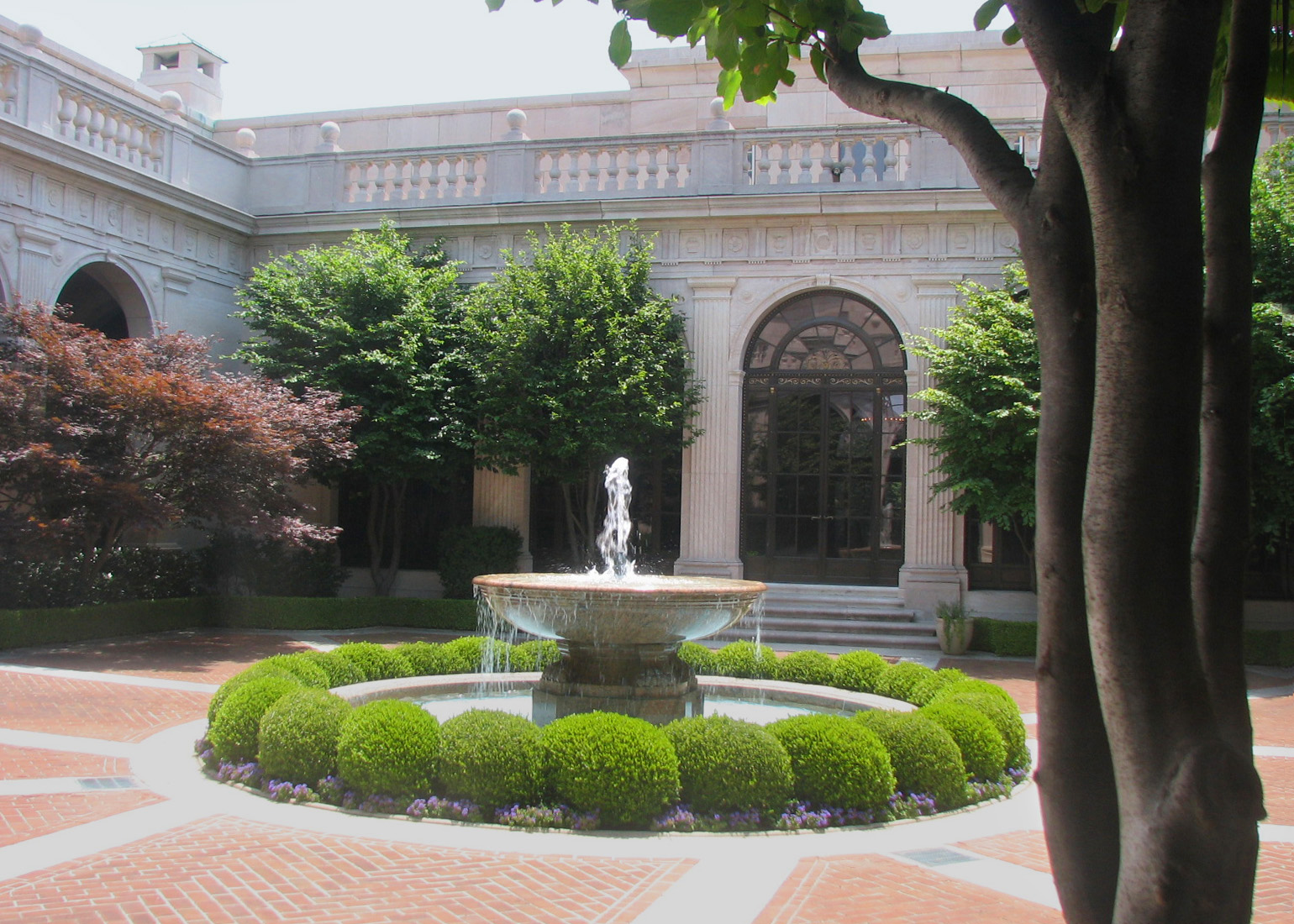
There's lovely courtyards inside...
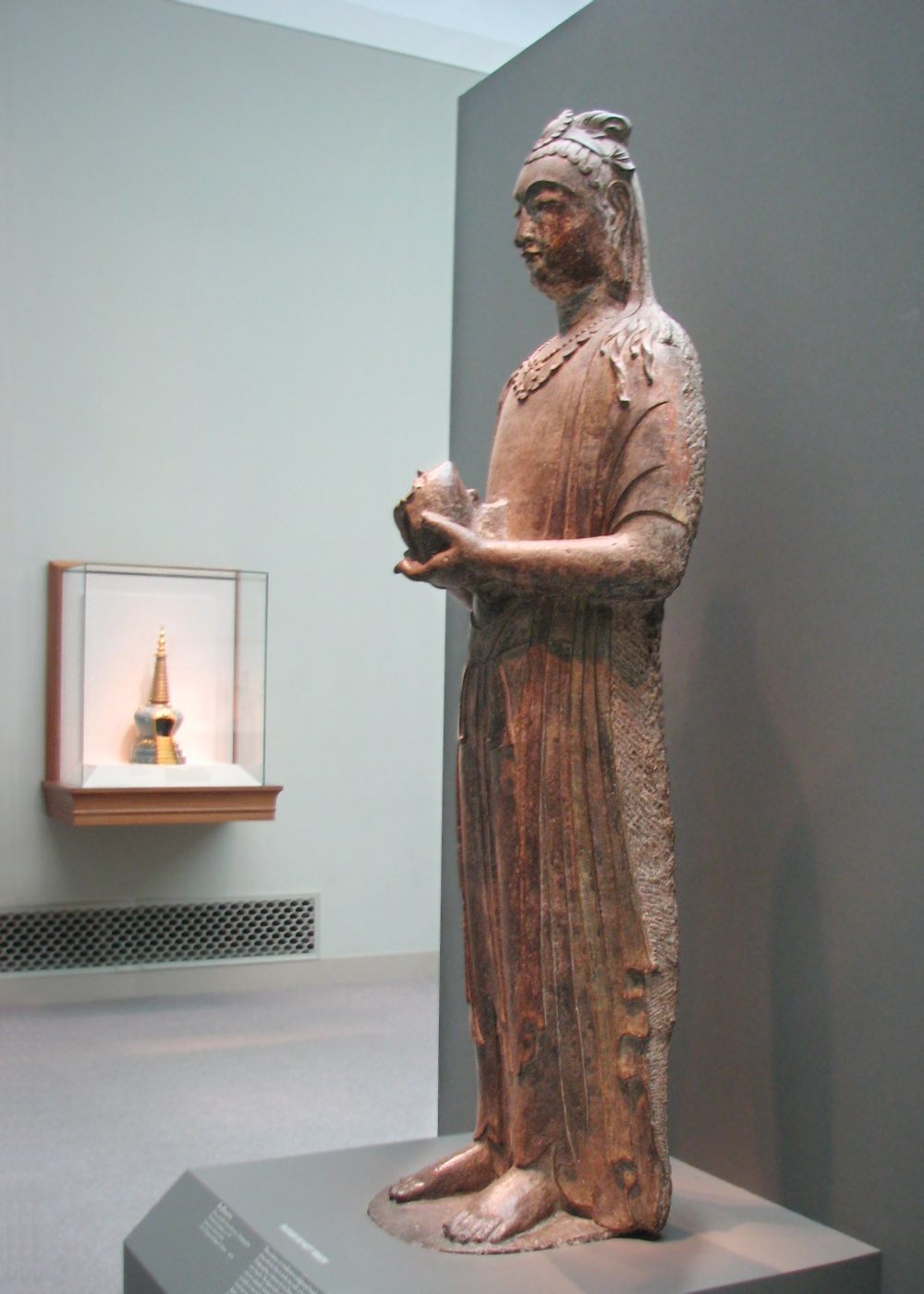
Bodhisattva:
China, probably Henan Province, Xiangtangshan
Northern Qi dynasty, ca. 570, Limestone, traces of color
And what's to his side...
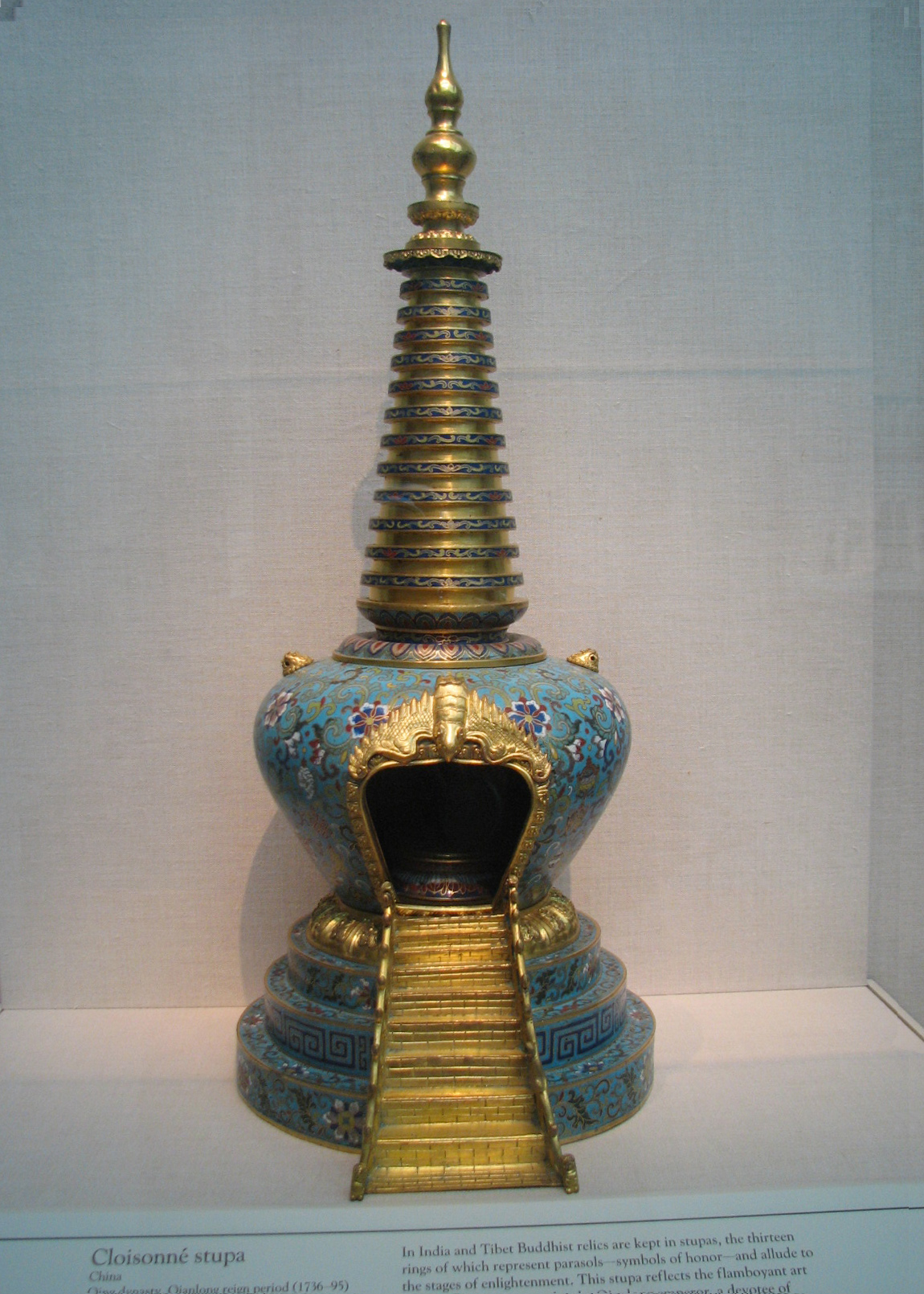
Cloisonné stupa:
China, Qing dynasty, Qianlong reign period (1736-95)
Metal, enamel, gilt (recent acquisition)
|
"In India and Tibet Buddhist relics are kept in stupas, the thirteen
rings of which represent parasols- symbols of honor-- and allude to the stages
of enlightenment. This stupa reflects the flamboyant art of the Chinese court under the Qianlong emperor, a devotee of Tibetan Buddhism. The decoration of the stupa is an unusual blend of religious and Chinese secular images. The designs depict a lotus scroll and the Eight Auspicious Symbols of Buddhism, including the Wheel of the Law. A bat - a Chinese good-luck symbol- appears above the opening at the top of the stairs that recall imperial architecture. Inside, a lotus throne symbolizes the presence of the Buddha." (From the info given on the accompanying placard) |
There are SO many beautiful items, which I will share later, but this stupa is particularily gorgeous. Next, of course, you know I must go to the small collection of Egyptian pieces:
